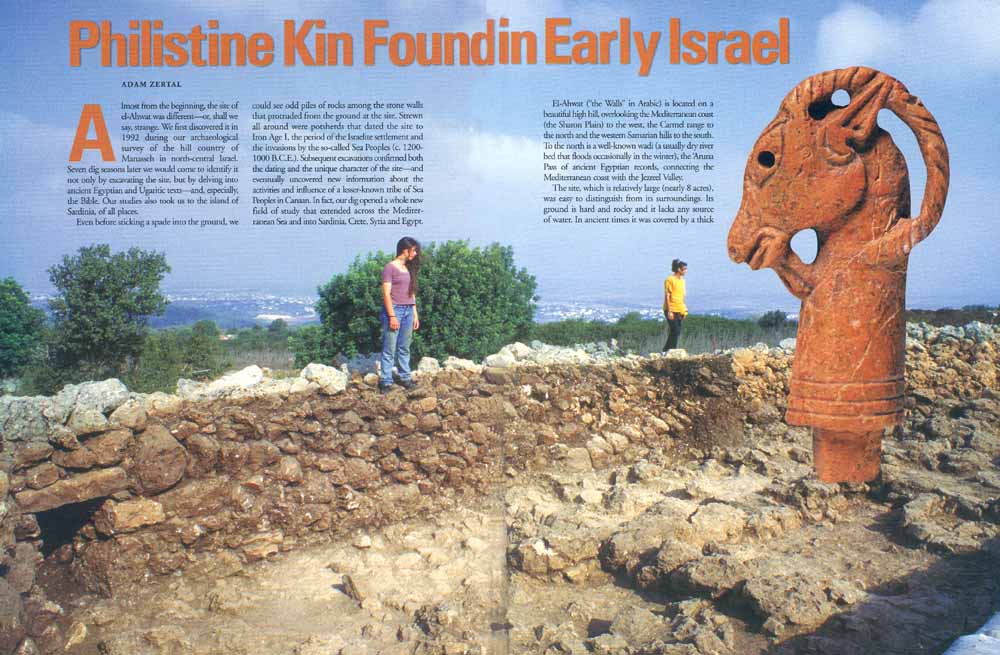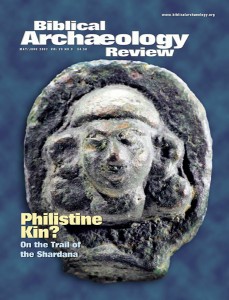
Almost from the beginning, the site of el-Ahwat was different—or, shall we say, strange. We first discovered it in 1992 during our archaeological survey of the hill country of Manasseh in north-central Israel. Seven dig seasons later we would come to identify it not only by excavating the site, but by delving into ancient Egyptian and Ugaritic texts—and, especially, the Bible. Our studies also took us to the island of Sardinia, of all places.
Even before sticking a spade into the ground, we could see odd piles of rocks among the stone walls that protruded from the ground at the site. Strewn all around were potsherds that dated the site to Iron Age I, the period of the Israelite settlement and the invasions by the so-called Sea Peoples (c. 1200–1000 B.C.E.). Subsequent excavations confirmed both the dating and the unique character of the site—and eventually uncovered new information about the activities and influence of a lesser-known tribe of Sea Peoples in Canaan. In fact, our dig opened a whole new field of study that extended across the Mediterranean Sea and into Sardinia, Crete, Syria and Egypt.
Already a library member? Log in here.
Institution user? Log in with your IP address.

